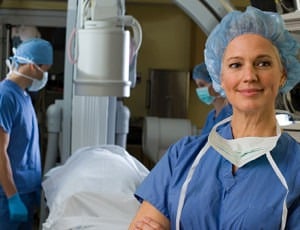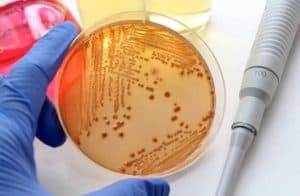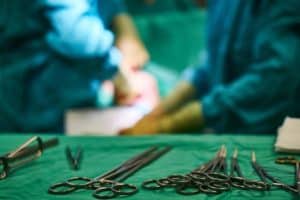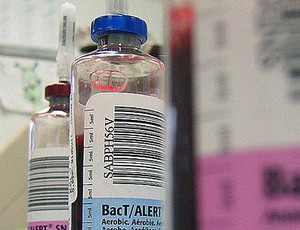Air embolism through open hub of external jugular vein intravenous cannula

We are reporting a case of sudden pulmonary air embolism in a patient through the open hub of an intravenous cannula” Mohanty et al (2019). Abstract: INTRODUCTION: Venous air embolism is a catastrophic complication that can result in sudden cardiac arrest and death. Massive air embolism has been reported with central venous catheter through the […]
Prehospital interventions performed on wartime pediatric trauma casualties

We describe injury characteristics and prehospital interventions performed on wartime pediatric trauma casualties in Afghanistan and Iraq, stratified by medical evacuation platform” Naylor et al (2019). Abstract: Background: Traumatic injuries were the most common reason for pediatric admission to military hospitals during the recent wars in the Middle East. We describe injury characteristics and prehospital […]
The case for using a disinfecting cap for needlefree connectors

Catheter-related bloodstream infections (CRBSIs) are a signification cause of infection. When CRBSI rates are high, the cost to the patient and the organisation can be significant” Barton (2019). Abstract Catheter-related bloodstream infections (CRBSIs) are a signification cause of infection. When CRBSI rates are high, the cost to the patient and the organisation can be significant. […]
Health professionals’ lack of knowledge of central venous access devices

It suggests that patients accept having a CVAD as it should reduce episodes of repeated cannulations. However, a recent doctoral study found the reality did not live up to this hope” Kelly et al (2019). Abstract Background: the literature on the patient experience of living with a central venous access device (CVAD) is growing, but […]
Clinical experiences of using ports and non-coring needles

The following case studies describe the use of the Smith Medical implanted ports and Gripper huber needles” Meade et al (2019). Abstract: The following case studies describe the use of the Smith Medical implanted ports and Gripper huber needles. Smiths Medical produces a range of implanted ports that include the Port-A-Cath and P.A.S. Port Power […]
Article examines components and selection of implantable ports

This article describes the different types and components of ports and how to select them. It explains how to insert ports, and provides guidance on accessing and de-accessing them” Hodson (2019). Abstract: Uses of central venous access devices (CVADs) include the administration of vital fluids and medications. Implanted ports are a type of CVAD that […]
Best practice for using ports and non-coring needles

This article explores the additional equipment required to be able to access ports” York (2019). Abstract: Ports are predominately inserted into oncology patients, but their use is becoming increasingly popular for other indications, such as cystic fibrosis. These devices not only provide patients and health professionals with reliable vascular access, but also preserve vessel health […]
Unconventional diagnostic tests for Lyme borreliosis

Lyme borreliosis (LB) diagnosis currently relies mainly on serological tests and sometimes polymerase chain reaction or culture. However, other biological assays are being developed to try to improve Borrelia-infection diagnosis and/or monitoring” Raffetin et al (2019). Abstract: Background: Lyme borreliosis (LB) diagnosis currently relies mainly on serological tests and sometimes polymerase chain reaction or culture. […]
Review of antibiotic overuse in the intensive care unit

To review the literature exploring how we diagnose infection in patients in the ICU and address the safety and utility of a “watchful waiting” approach to antibiotic initiation with selected patients in the ICU” Denny et al (2019). Abstract: Background: Most Intensive Care Unit (ICU) patients receive broad-spectrum antibiotics. While lifesaving in some, in others […]
PICC placement led by technicians is feasible and safe

PICC placement led by technicians is feasible and safe without statistical difference in terms of complications compared to PICC placement made by radiologists” Chasseigne et al (2019). Abstract: PURPOSE: The purpose of this study was to evaluate a cooperation program in order to compare incidence of complications after peripherally inserted central catheter (PICC) placement between […]
Evaluation of the activity of heparin injected into an implantable port

We can conclude that lock of heparinized solution used in our service in fully implantable central venous catheters for chemotherapy, was maintained with active heparin even after a long period of time (up to 30 days), demonstrating that the half-life of the substance within the catheter is greater than its plasma half-life” Pacheco Annicchino Baptistella […]
Impact of home parenteral nutrition and the older adult

In this large cohort study, increasing age was found to be protective against CRBSI” Bond et al (2019). Abstract: INTRODUCTION: The population in developed countries is getting older and with advancing age comes increasing co-morbidity and demand on health care services. The use of home parenteral nutrition (HPN) is also increasing in the UK and […]
Prevalence of complications associated with hemodyalisis CVAD

Ultrasonographic guidance is associated with a reduction in the prevalence of central venous line complications” Müller-Ortiz et al (2019). Abstract: BACKGROUND: Placing central venous lines under ultrasonographic guidance reduces the complications of the procedure. AIM: To compare prevalences of complications of central venous line placements with or without ultrasonographic guidance. MATERIAL AND METHODS: Descriptive study […]
The inside-out technique for tunneled dialysis catheter placement

The “inside-out” technique eliminates the need for subclavian or femoral catheter placement by placing a supraclavicular catheter via a percutaneous femoral vein access” Freeman et al (2019). Abstract: The “inside-out” technique eliminates the need for subclavian or femoral catheter placement by placing a supraclavicular catheter via a percutaneous femoral vein access. Few reports of its […]
Integrated OPAT treatment of patients with opioid use disorder

outpatient clinic that combines office-based opioid treatment with buprenorphine pharmacotherapy and counseling services with OPAT” Fanucchi et al (2019). Abstract: Persons with opioid use disorder (OUD) hospitalized with severe, injection-related infections (SIRI) are frequently hospitalized for the duration of IV antibiotic treatment due to concerns regarding their eligibility for outpatient parenteral antimicrobial therapy (OPAT), which […]
OPAT treatment for non-cystic fibrosis bronchiectasis exacerbations

The recently published guidelines of the Spanish Society of Pulmonology and Thoracic Surgery encourage physicians to use outpatient antimicrobial therapy to treat exacerbations in patients with non-cystic fibrosis bronchiectasis (NCFB)” López-Cortés et al (2019). Abstract: BACKGROUND: The recently published guidelines of the Spanish Society of Pulmonology and Thoracic Surgery encourage physicians to use outpatient antimicrobial […]
Accuracy of syringe infusion pump devices depending on altitude

The aim of this study was to compare infusion flow rates delivered by low-weight versus standard SIP devices, in the prehospital emergency medicine setting, at different altitudes” Blancher et al (2019). Abstract: BACKGROUND: Intravenous drug infusions in critically ill patients require accurate syringe infusion pumps (SIPs). This is particularly important during transportation of critically ill […]
Vascular access animal models used in research

To provide a systematic literature review on effectiveness of arteriovenous fistula (AVF) and Shunt (AVS), research animal models” Kokozidou et al (2019). Abstract: PURPOSE: To provide a systematic literature review on effectiveness of arteriovenous fistula (AVF) and Shunt (AVS), research animal models. BACKGROUND: Due to advancing human population age, there is increased incidence of patients […]
Practices and perceptions regarding intravenous opioid infusion

More than half the nurses working in the inpatient setting reported administering iv opioids too fast. ICU nurses administered opioids the fastest” Arthur et al (2019). Abstract: BACKGROUND: In view of the recent opioid crisis, ways to promote safe and effective opioid-related practices are needed. Faster intravenous (iv) opioid infusion rates can result in increased […]
Anaphylaxis simulation for interprofessional healthcare education

In the spring of 2015, stakeholders at the outpatient antibiotic therapy program (OPAT) at The Ottawa Hospital (TOH) approached the nurse educator team to develop an education session around anaphylaxis management” Dale-Tam and McBride (2019). Abstract: In-situ simulation occurs in the clinical environment. This allows healthcare providers greater access to the educational session while providing […]
Study on the infusion-site adverse events of epirubicin in chemotherapy

In breast cancer patients on a fluorouracil-epirubicin (EPI)-cyclophosphamide (FEC) regimen and intravenous fosaprepitant (FAP) during chemotherapy, infusion-site adverse events such as vascular pain and induration and/or phlebitis are observed” Yamasaki et al (2019). Abstract: In breast cancer patients on a fluorouracil-epirubicin (EPI)-cyclophosphamide (FEC) regimen and intravenous fosaprepitant (FAP) during chemotherapy, infusion-site adverse events such as […]
Risk of Emerade product failing to deliver a dose of adrenaline from the syringe

Pharmaswiss Česka republika s.r.o. (an affiliate of Bausch & Lomb UK Limited) has informed us of a risk of Emerade product failing to deliver a dose of adrenaline from the syringe due to blockage of the needle” MHRA (2019). MHRA report “Bausch & Lomb UK limited has informed us of a risk of Emerade product […]
Patient acceptability of three different central venous access devices

Patient experiences and preferences have not been systematically used to inform policy and practice regarding CVAD availability and selection” Ryan et al 92019). Abstract: OBJECTIVE: Three types of central venous access devices (CVADs) are routinely used in the delivery of intravenous systemic anticancer therapy (SACT): peripherally inserted central catheters (PICCs), subcutaneously tunnelled central catheters (Hickman-type […]
Multi-component lipid emulsion vs soy-based lipid emulsion for very low birth weight neonates

To examine the effectiveness of soybean oil-medium chain triglycerides-olive oil-fish oil lipid emulsion (SMOF-LE) on clinical outcomes of very-low-birth-weight neonates” Torgalkar et al (2019). Abstract: Objective: To examine the effectiveness of soybean oil-medium chain triglycerides-olive oil-fish oil lipid emulsion (SMOF-LE) on clinical outcomes of very-low-birth-weight neonates. Study design: We conducted a pre-post comparative study of […]
Analysis of needlestick injuries and depression among medical staff

To investigate needlestick injuries and depression among the female medical staff in a city district” Yuan et al (2019). Abstract: Objective: To investigate needlestick injuries and depression among the female medical staff in a city district. Methods: Using cross-sectional survey methods, female medical staff from selected sixteen hospitals voluntarily participated in questionnaire survey on APP […]
Measures to reduce Amiodarone-induced phlebitis

Phlebitis is a well-described adverse effect of intravenous (IV) administration of amiodarone, with reported incidence ranging from 11% to 85%” Dixon et al (2019). Extract: Phlebitis is a well-described adverse effect of intravenous (IV) administration of amiodarone, with reported incidence ranging from 11% to 85%. Risk factors for amiodarone-induced phlebitis (AIP) are many and include […]
Are three blood cultures sets really necessary in febrile patients?

The optimal number of blood culture sets (BCs) should be seen in the light of a significant number of additional blood culture contaminants (BCC) with subsequent BCs. A stronger selection of patients who need BCs is mandatory to limit BCC” Mahieu et al (2019). Abstract: The optimal number of blood culture sets (BCs) should be […]
Giant dorsalis pedis pseudoaneurysm following arterial line insertion

Here we report an unusual case of a giant DPA pseudoaneurysm after cannulation for arterial line placement in a patient newly diagnosed with systemic lupus erythematosus (SLE)” Anastasiadou et al 92019). Abstract: Dorsalis pedis artery (DPA) aneurysms are very rare and fewer than 60 cases have been reported in the literature. Most affected patients present […]
Health Care utilization after various vascular access selections

This study displayed that patients who received an AVF fully used health care and nonnephrology services than patients who received an AVG or CVC” Chang et al (2019). Abstract: BACKGROUND: To provide clinicians with sufficient information for selecting optimal access strategies for patients with end-stage renal disease, the utilization of health-care services of patients receiving […]
Clinical practice guidelines for replacing peripheral intravenous catheters

A community hospital policy of routinely replacing peripheral intravenous catheters (PIVCs) needed updating to the clinical practice guideline (CPG) of clinically indicated replacement” Oh et al (2019). Abstract: BACKGROUND: A community hospital policy of routinely replacing peripheral intravenous catheters (PIVCs) needed updating to the clinical practice guideline (CPG) of clinically indicated replacement. METHODS: Guided by […]

